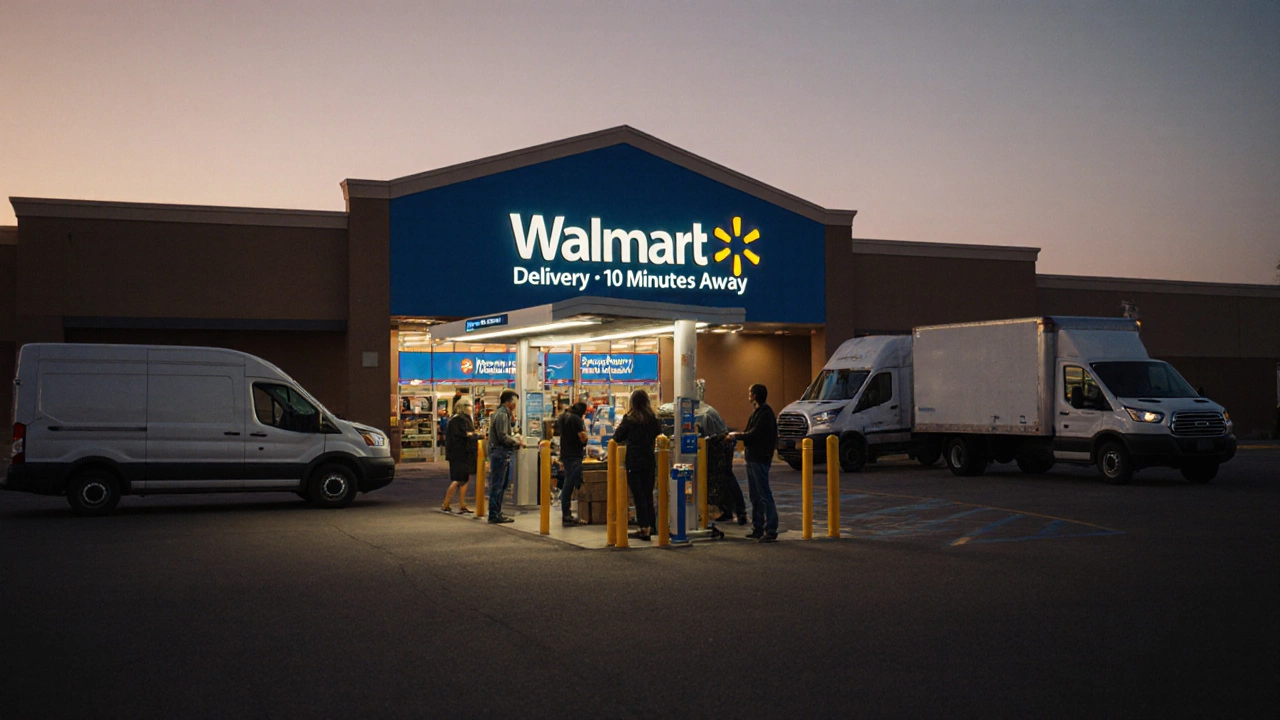When you order something online in the U.S., you don’t just buy a product-you buy speed, reliability, and ease. Behind every one-click purchase is a logistics machine that’s more complex than most people realize. So which e-commerce company runs the best logistics operation in the U.S.? The answer isn’t just about sales numbers or website traffic. It’s about how fast packages move, how accurately they’re delivered, and how well the system handles millions of orders every day without falling apart.
Amazon dominates because it controls the whole chain
Amazon isn’t just an online store. It’s a logistics empire. By 2025, Amazon operates over 1,100 fulfillment centers across the U.S., plus 100+ sortation centers and 100,000 delivery stations. That’s not luck-it’s strategy. They own their trucks, planes, and last-mile drivers. In 2024 alone, Amazon delivered over 5 billion packages in the U.S. using its own network, cutting out third-party carriers for nearly 70% of its shipments.
What does that mean for you? If you order from Amazon before noon, you’re likely to get it the same day or the next. Same-day delivery is available in over 100 metro areas. Even rural customers get 2-day shipping as standard. That’s not a perk-it’s the baseline. And it’s all powered by real-time inventory tracking, AI-powered warehouse robotics, and predictive shipping algorithms that move products closer to you before you even click “buy.”
Walmart’s logistics is quietly better than you think
Walmart doesn’t get the same hype as Amazon, but its logistics network is one of the most efficient in the country. With over 4,700 U.S. stores, Walmart uses each location as a mini-fulfillment center. If you order online and live within 10 miles of a Walmart, your order likely ships from the store next door-not a distant warehouse.
This model cuts delivery time and cost. In 2024, Walmart achieved 95% of its online orders delivered within two days, with 30% arriving in under 24 hours. They also use their trucking fleet-over 6,000 trailers-to move goods between stores and regional hubs. Unlike Amazon, Walmart doesn’t need to build new centers. They use what’s already there. That’s why their same-day delivery is cheaper and more widely available than Amazon’s in many small towns.
Walmart’s logistics wins when speed and cost matter more than flashy tech. For budget shoppers, it’s often the fastest and cheapest option.
Shopify’s ecosystem is the hidden logistics powerhouse
Shopify doesn’t ship packages. But it powers over 1.7 million online stores in the U.S. That’s more than Amazon, eBay, and Etsy combined. And here’s the twist: Shopify’s real strength isn’t its platform-it’s the logistics network built around it.
Through Shopify Shipping, merchants get discounted rates with USPS, UPS, and FedEx. Through Shopify Fulfillment Network (SFN), they can store inventory in 15+ U.S. warehouses and get 2-day delivery without running their own centers. SFN handles everything: receiving stock, packing orders, printing labels, and returning items. Over 5,000 brands use SFN, including well-known names like Allbirds and Beardbrand.
For small businesses, this is a game-changer. Before SFN, a startup selling handmade candles needed a warehouse, staff, and software just to ship 50 orders a week. Now, they can scale to 5,000 orders a week without hiring a single warehouse worker. Shopify doesn’t own trucks or planes-but it connects sellers to the best logistics tools at scale.

Why FedEx and UPS aren’t the answer
You might think FedEx or UPS is the best because they deliver for everyone. But they’re carriers, not e-commerce companies. They move packages for Amazon, Walmart, and Shopify-but they don’t control inventory, pricing, or customer experience.
Amazon uses FedEx and UPS for overflow. Walmart uses them for long-haul freight. Shopify merchants use them because they have to. But none of these carriers can guarantee same-day delivery, offer free returns across thousands of sellers, or predict demand before it happens. They’re part of the system, not the brain behind it.
Who wins for the average shopper?
If you care about speed and convenience, Amazon wins. It’s the only company that can deliver a toaster to your door in 3 hours in most major cities.
If you care about value and local availability, Walmart wins. You’ll get the same item cheaper, faster, and often with free pickup.
If you’re a small business owner or buy from indie brands, Shopify’s network gives you access to enterprise-level logistics without the enterprise cost.
There’s no single “best” company. But if you’re asking which one has the most advanced, scalable, and customer-focused logistics system in the U.S., Amazon is the clear leader. It’s the only one that’s built its own end-to-end system from the ground up-and it’s constantly improving it.

What’s changing in 2025?
Amazon is testing drone delivery in 12 U.S. states. Walmart is rolling out autonomous delivery robots in 50 cities. Shopify is adding AI-powered inventory forecasting to SFN, so stores can avoid overstocking or running out.
One thing’s clear: the winner isn’t just the biggest player. It’s the one that uses data, automation, and real-world infrastructure to make shipping feel invisible. That’s Amazon. But Walmart and Shopify aren’t far behind-and they’re forcing Amazon to keep getting better.
Is Amazon the only e-commerce company with its own delivery network?
No. Walmart has its own trucking fleet and uses stores as fulfillment centers. FedEx and UPS deliver for many companies, but they don’t own the inventory or set delivery standards. Amazon is the only one that fully owns and controls every step-from warehouse to doorstep.
Can small businesses use Amazon’s logistics?
Yes, through Amazon FBA (Fulfillment by Amazon). Sellers send inventory to Amazon warehouses, and Amazon handles storage, packing, shipping, and returns. It’s expensive, but it gives sellers access to Prime shipping speeds and millions of customers. Many small businesses rely on it to compete with bigger brands.
Is Walmart’s delivery faster than Amazon’s?
In many cases, yes-if you live near a Walmart store. Because orders ship from local stores, Walmart often beats Amazon’s 2-day delivery for same-day or next-day service. Amazon wins in cities with dedicated fulfillment centers, but Walmart has the edge in suburbs and smaller towns.
What’s the cheapest way to ship online?
For shoppers, Walmart often has lower shipping fees and free pickup. For sellers, Shopify Shipping offers the best discounted rates across major carriers. Amazon FBA is cost-effective for high-volume sellers but has strict fees. The cheapest option depends on your location, order size, and how often you shop.
Does Shopify have its own warehouses?
Yes, through the Shopify Fulfillment Network (SFN). It’s a network of third-party warehouses that Shopify partners with across the U.S. These centers are managed by logistics companies, but Shopify integrates them into one system. Sellers can track inventory and shipping from their Shopify dashboard, just like they’re using Amazon’s system.
What should you choose?
If you’re a shopper: Use Amazon for speed, Walmart for savings, and Shopify stores for unique products. Each has a different strength.
If you’re a seller: Use Amazon FBA if you want volume and Prime access. Use Shopify Fulfillment Network if you want control and scalability without huge upfront costs. Use Walmart’s marketplace if you sell everyday items and want to reach budget-conscious buyers.
The real winner isn’t one company. It’s the consumer-and the small business-who now has more options than ever before. Logistics isn’t about who has the biggest trucks. It’s about who makes getting your order simple, fast, and affordable. And in 2025, that’s a race with three strong runners.





